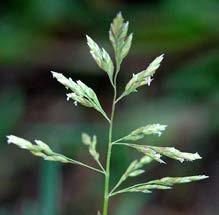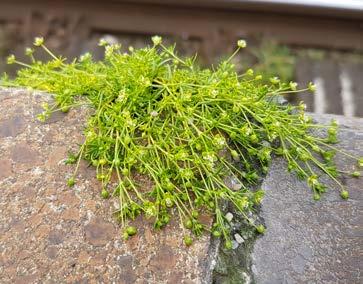
3 minute read
Bringing nature back to our streets
We are often blind to the rich diversity of plants in our urban ecosystems, but recent monitoring exercises4 have shown that over 80 different species of plants can be found in just one street.
The latest plant atlas published by the Botanical Society of Britain and Ireland (BSBI)5 shows that Britain is now one of the most nature-depleted countries in the world. Particularly striking is the report’s findings that non-native plant species are now more prevalent than native species. Our insects and wildlife are adapted to, and depend on, our native plant-life to survive, having often evolved together. Native species have, in many cases, also been shown to provide more nectar than planted or introduced species6.
Supporting our native plant life is critical in avoiding a total biodiversity collapse and we have so much available, wasted space in our towns and cities which could be turned over to help our wildlife.
The UK’s Environment Act 2021 clearly states that Local Authorities have a “general duty to conserve and enhance biodiversity“ and requires councils and other “responsible authorities” to create “local nature recovery strategies for England“. Councils’ ongoing use of pesticides conflicts with their duty to help nature recover. Rather, policies and measures should be put into practice that encourage nature onto our streets.
Having measures in place to boost biodiversity which don’t tackle pesticide use are likely to fail. Our cities have become concrete jungles where councils spend large sums of money fighting to get rid of plants which grow back year after year. We can shift our approach to working with, rather than against, our natural world.
The Mayor of London’s Grey to Green Guide7 to depaving areas that have low to no footfall and creating wild patches is an excellent initiative which shows that compromise is possible without a loss of accessibility.
Green space has also been shown to contribute to climate crisis mitigation by absorbing heat and removing pollutants from the air. They also help to reduce pressure on our sewage system by filtering water8 and help to alleviate flood risks. Ending the use of fossil fuel-derived pesticides and investing in urban green infrastructure will create more resilient cities for the future.
Common pavement plants
Some plants seem to really thrive on our pavements. Many are pioneering annuals which grow fast and produce lots of tiny easily-dispersed seeds, like those in the Daisy family which are well represented on our streets. Some are representatives of our native plants and others are introduced plants which have escaped from gardens or have arrived in the British Isles by accident and are now naturalised. Selecting a list of common pavement plants is a challenge because of the large number of fascinating plants to choose from.
The main criteria used to narrow down the list were that you can find these plants in many urban areas all around the British Isles (unless noted otherwise) and some of them almost year-round. The final selection was also those which would be relatively straightforward for beginner plant spotters to recognise.
In pavement cracks
About this habitat: Pavement cracks will tend to be fairly dry with limited organic substrate and frequently trampled. Plants which can thrive in these conditions are likely to need lots of light, be low growing, tolerant of dry and low nutrient conditions, and will benefit from the limited competition from other plants.


Annual Meadow-grass (Poa annua). A very common annual grass which thrives on pavements. This is often one of the first plants to colonise a pavement crack. It’s low growing, with hooded leaf-tips on leaf blades, which are often wrinkled, and a loosely triangular-shaped flowering head.

Dandelion (Taraxacum spp.). A very familiar perennial plant to many people, particularly if you’ve wrestled with their long tap roots in your garden or allotment. On pavements they are often the first plant in the Daisy family to flower in spring and so are a valuable food plant for early emerging insects. Dandelions are actually 232 different species in the British Isles although most have a very limited distribution.
Procumbent Pearlwort (Sagina procumbens). This tiny mat-forming perennial in the Campion family looks superficially like moss but produces tiny flowers often without petals. As well as rooting in pavement cracks it thrives on wall tops and paths.


Thale Cress (Arabidopsis thaliana). A rosetteforming plant in the Cabbage family which has hairy leaves and is drought tolerant. The small white flowers which appear on an erect stem in spring and autumn develop into long fruit.











